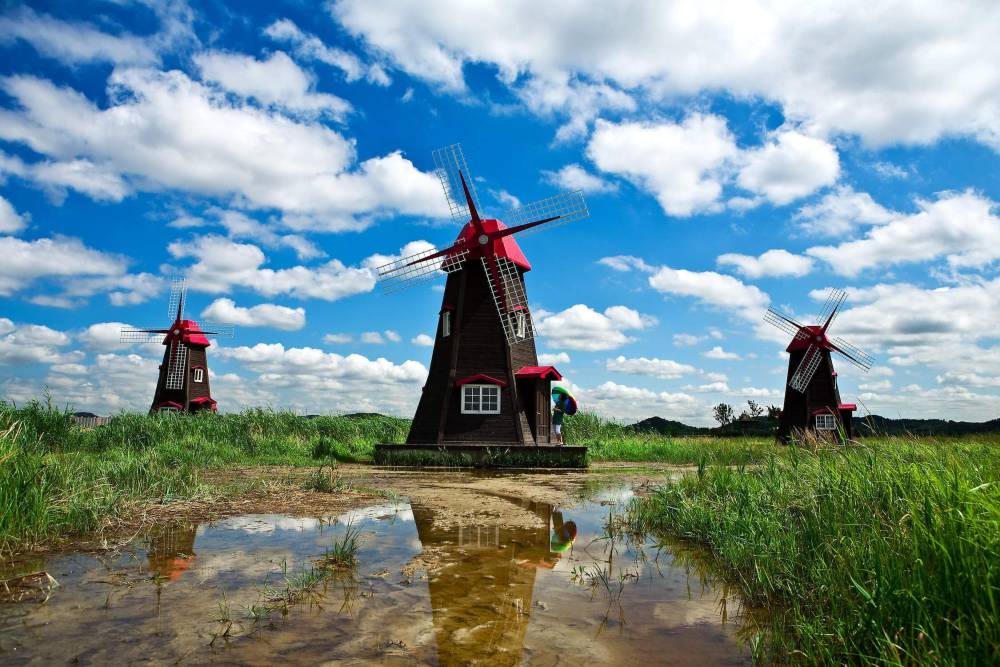When one thinks of the Netherlands, visions of charming windmills set against picturesque landscapes often come to mind. These iconic structures are not just postcard-worthy; they are an integral part of Dutch culture and history. In this blog, we invite you on a virtual windmill adventure to explore the Dutch countryside, where you'll discover the beauty, heritage, and importance of these iconic windmills.
Windmills - Symbols of the Netherlands
Windmills are quintessential symbols of the Netherlands. While they might evoke romantic images of days gone by, Dutch windmills have a rich history rooted in practicality. Historically, windmills were used for various purposes, from pumping water to grinding grain, sawing timber, and even producing electricity.
Kinderdijk - A UNESCO World Heritage Site
No exploration of Dutch windmills would be complete without a visit to Kinderdijk, a UNESCO World Heritage Site located near Rotterdam. This charming village boasts 19 well-preserved windmills, which were originally built in the 18th century to drain excess water from the low-lying polders and prevent flooding. Explore the network of walking and cycling paths along the canals, and marvel at the intricate machinery inside these working windmills.
Zaanse Schans - A Living Windmill Village
Zaanse Schans, located just a short drive from Amsterdam, is a picturesque living museum where you can step back in time and experience Dutch life from the 17th and 18th centuries. Here, you'll find a collection of well-preserved windmills that were moved to the site to create an authentic historic village. Explore working sawmills, oil mills, and spice mills, and witness traditional craftsmanship in action.
.jpeg)
The Beauty of the Dutch Countryside
The Dutch countryside, known as the "polders," is a patchwork of lush green fields, meandering canals, and serene lakes. Windmills are often nestled amid this idyllic landscape, adding to its timeless beauty. Take a leisurely bike ride or a peaceful canal cruise to fully immerse yourself in the tranquility of the countryside and appreciate the harmonious coexistence of nature and technology.
Windmill Types and Functions
Dutch windmills come in various types, each designed for specific functions. Here are a few examples:
Drainage Mills (Poldermolen): Used to pump water from low-lying polders to prevent flooding.
Corn Mills (Korenmolen): Designed for grinding grains like wheat, rye, and barley into flour.
Sawmills (Houtzaagmolen): Used to saw timber into planks and beams.
Oil Mills (Oliemolen): Employed to crush seeds like rapeseed and linseed to extract oil.
Each type of windmill offers a unique glimpse into Dutch industrial history.
The Modern Role of Windmills
While many traditional windmills are preserved for their historical and cultural value, wind energy is also a critical part of modern Dutch life. The Netherlands is a leader in wind energy production, with numerous modern wind farms generating electricity from wind turbines. These turbines harness the power of the wind to provide clean and sustainable energy for the country.
Windmill Museums and Education
Several windmill museums across the Netherlands offer educational insights into the history and mechanics of windmills. Visitors can learn about the significance of windmills in Dutch life and appreciate the engineering marvels that have stood the test of time.
Conclusion
A windmill adventure through the Dutch countryside is a journey into the heart of Dutch heritage and innovation. Windmills, both old and new, continue to play a vital role in the country's landscape and culture. As you explore these iconic structures and the stunning landscapes that surround them, you'll gain a deeper appreciation for the Netherlands' rich history and its commitment to sustainable energy. So, pack your bags, put on your walking shoes or hop on a bike, and embark on a windmill adventure that promises beauty, history, and a connection to the Dutch spirit.


0 Comments